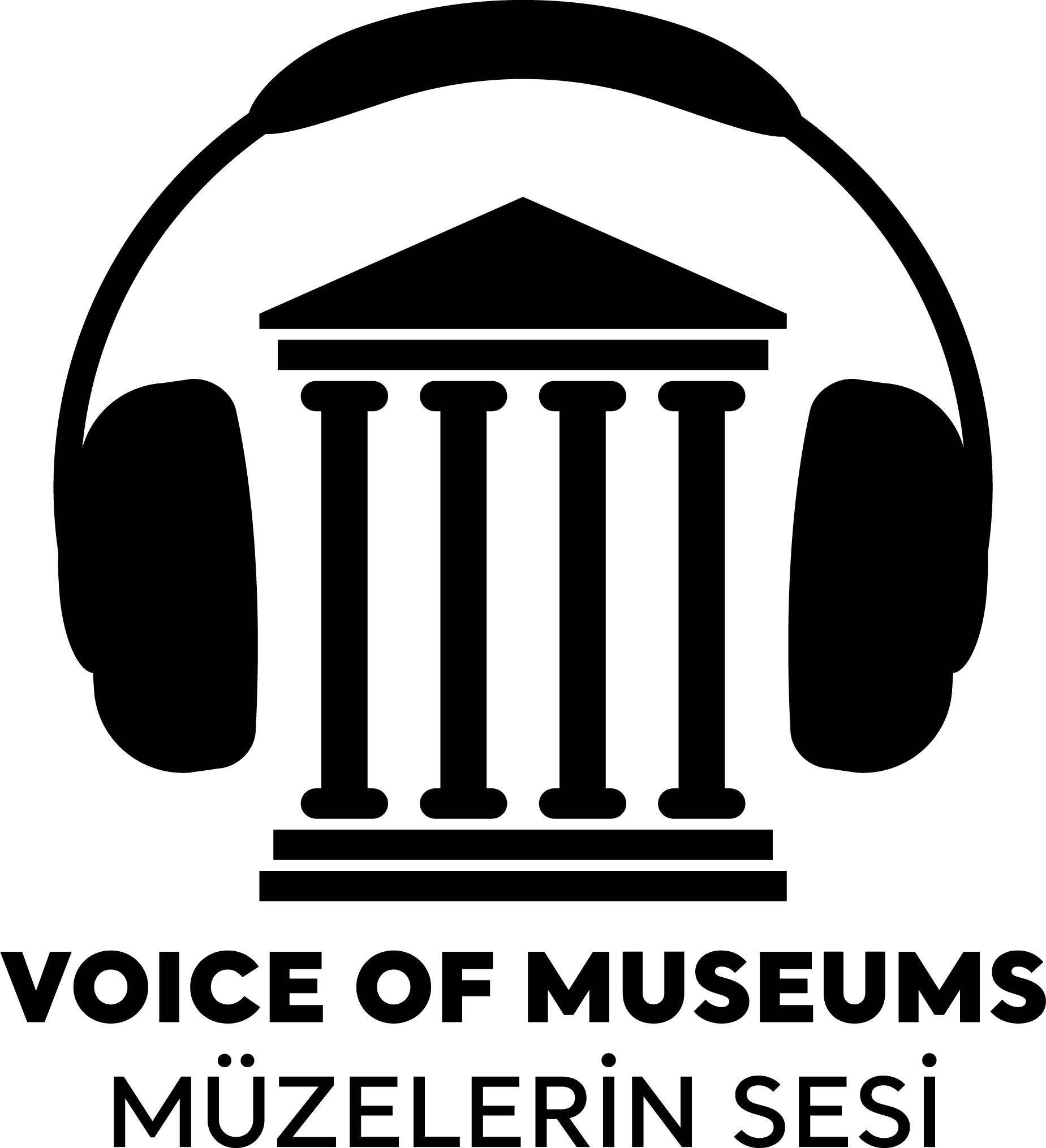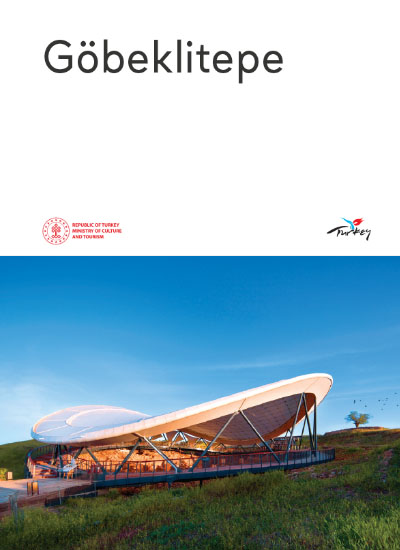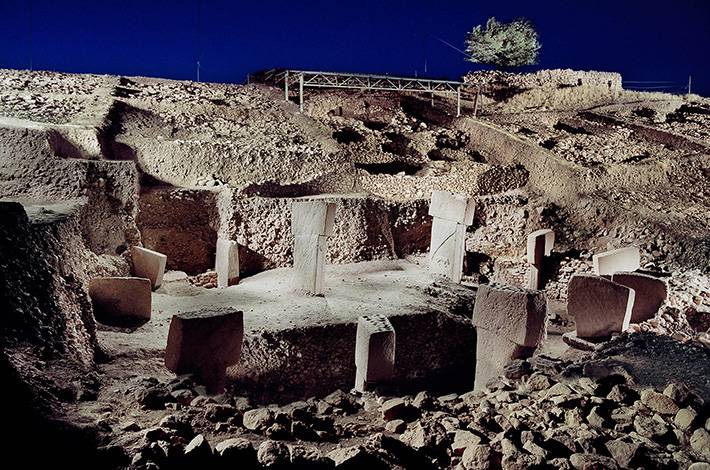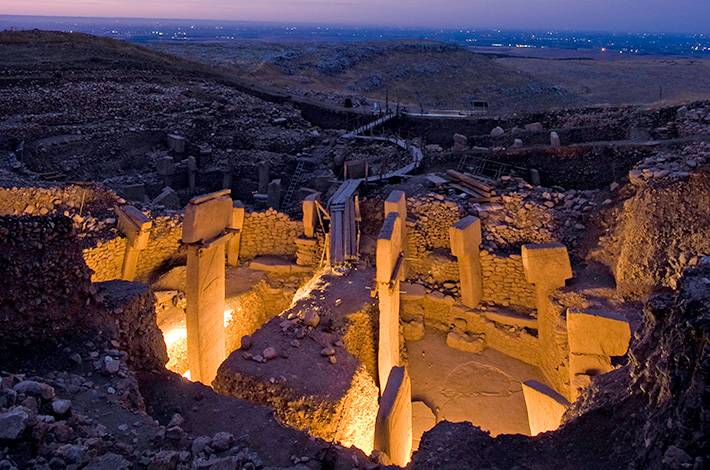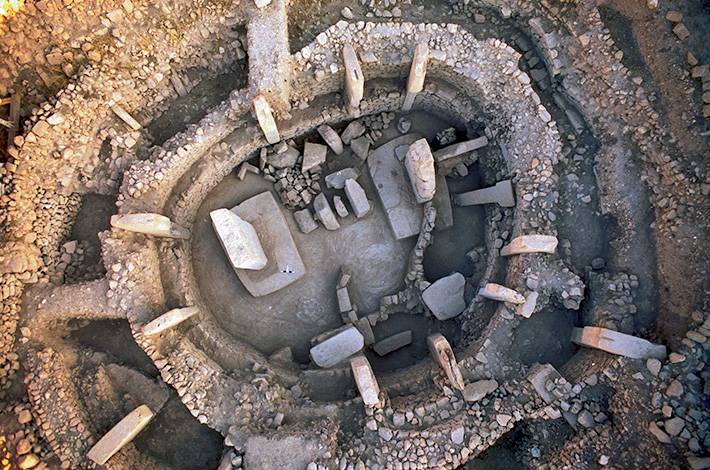Göbeklitepe was first identified as an archaeological site in 1963 during a survey conducted by Turkish and American scientists. It is located 15 km northeast of Şanlıurfa, on a mountainous area near the Örencik Village. This location is not on the water's edge, valley or plain as in other Neolithic Period settlements, but on an elevation bordering the Harran Plain to the north, in a position dominating the view and landscape. Due to its location and topographical features, the significance of the site was not fully appreciated at the time of its initial recognition. It was assumed to be a cemetery, based on the presence of limestone blocks across the hillside. Between 1995 and 2006, continuous excavations were conducted under the direction of the Şanlıurfa Museum Directorate, with the participation of Prof. Dr. Harald Hauptmann from the German Archaeological Institute and later Dr. Klaus Schmidt and his team. Following the unfortunate demise of Schmidt in 2014, the excavations have been conducted by an international team. To date, four layers have been unearthed at Göbekli Tepe. The uppermost layer, designated as layer 1, is the surface fill where agriculture was practised. The remaining three layers are dated to the Pre-Pottery Neolithic Period. The most significant layer of Göbekli Tepe, dating to the Pre-Pottery Neolithic-A Phase, is Layer III. This layer yielded the discovery of large circular planned structures surrounded by obelisks. These structures, which are believed to be cult-related, were formed by arranging T-shaped obelisks in a circular shape at specific intervals and surrounding them with walls. In the centre, there are two obelisks positioned opposite each other and larger than the ones on the sides. The obelisks in the centre are freestanding, while those on the sides are connected to each other by walls or benches. Excavations revealed that these structures were deliberately covered with soil and gravel fill after their completion, suggesting that they may be related to the cult of the dead. Four such monumental structures have been unearthed so far, and geomagnetic studies revealed that there are at least 20 monumental structures in Göbekli Tepe. The obelisks were obtained by cutting monoliths from the rocky plateaus surrounding the site. Some obelisks can still be seen in the field in their unprocessed state, where they were cut. In addition, there are cavities and some signs on the rocks on these plateaus, the functions of which are not yet understood.
Some of the obelisks, which reach a height of 5 metres, feature relief depictions of various animals, including snakes, foxes, wild boars and birds. The arms and hands in relief on some examples suggest that the obelisks are stylised human figures, and that their extremely schematic and cubic bodies represent beings of another dimension rather than living beings. The discovery of wild, predatory animal sculptures during the excavations, often as surface finds, evokes the image of Kerberos, the guardian of the underworld known from antiquity. This suggests that these wild animal sculptures may have been the guardians of the structures at Göbekli Tepe. As a result of the excavations, a vast array of animal statues, flint tools, stone beads and vessels, and small figurines were unearthed. In this period represented in Göbekli Tepe, it is thought that people lived by hunting and gathering, and that agriculture was not yet practised. In terms of the location of the settlement, the huge structures unearthed, the obelisks weighing tons and the placement of these obelisks, it is thought that the Stone Age people acted within a great organisation over a long period of time. In 2018, Göbeklitepe was inscribed on the UNESCO World Heritage List. While You’re Here… A visit to the Şanlıurfa Archaeological Museum is highly recommended, as it houses a number of significant artifacts and sculptures that were excavated in Göbeklitepe. These include a leopard, wild boars, storks, foxes, gazelles, scorpions, snakes, and headless human reliefs in temple structures, which are important findings in the context of the belief of the period. Additionally, an impressive replica of Göbeklitepe is available for visitors in a separate section.
